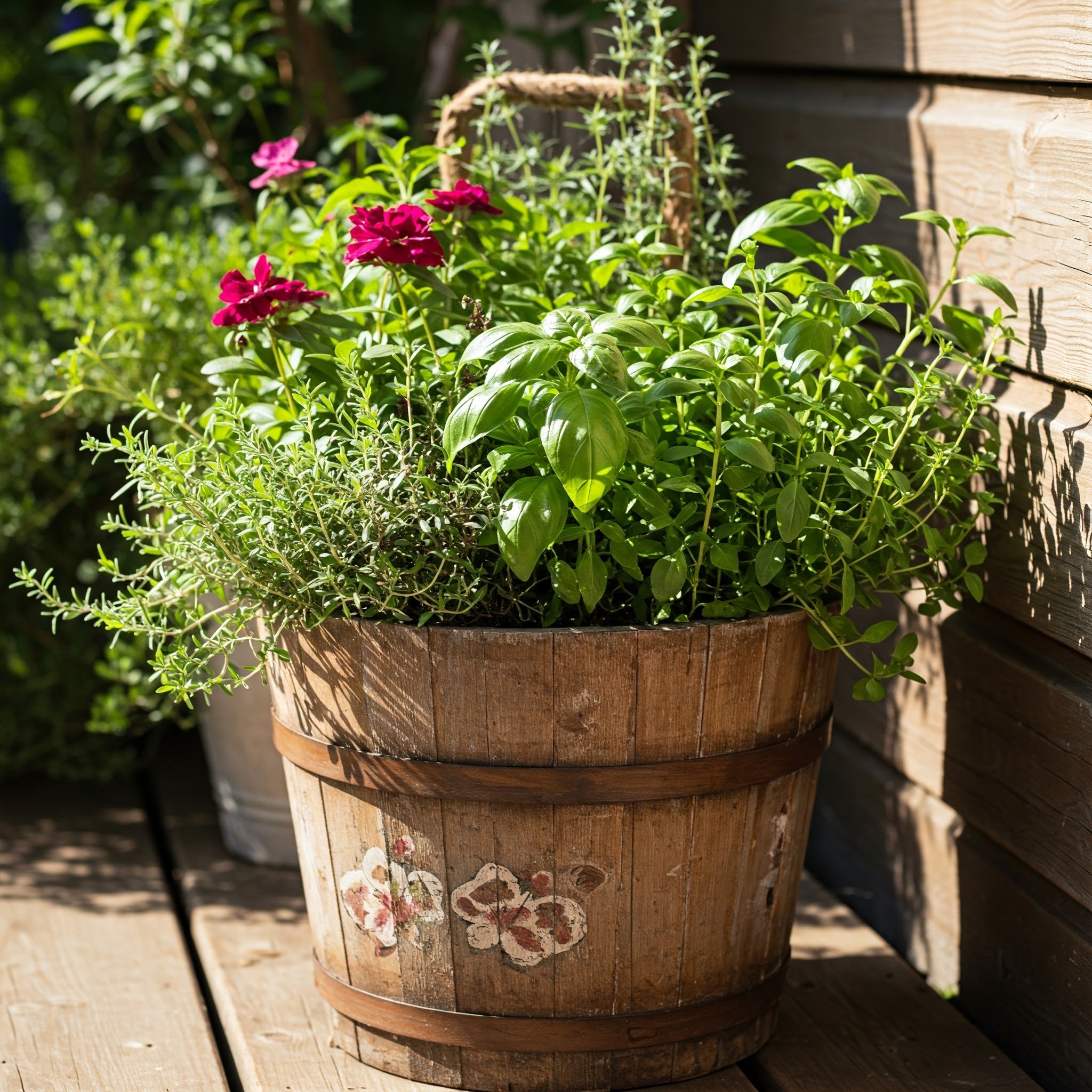How to Get Rid of Weeds Naturally
Discover effective and eco-friendly methods to eliminate weeds naturally in your garden. This comprehensive guide offers tips, tricks, and techniques to keep your garden weed-free without harmful chemicals.
Ah, weeds—the uninvited guests of our gardens. They pop up seemingly overnight, stealing nutrients, water, and light from your beloved plants. As frustrating as they are, you don’t have to resort to harsh chemicals to tackle them. There are plenty of natural methods to keep your garden looking pristine without harming the environment or your health.
In this guide on How to Get Rid of Weeds Naturally, we’ll explore various effective techniques, homemade remedies, and preventative measures you can take to banish those pesky intruders. So, let’s roll up our sleeves and dig into the nitty-gritty of weed control!
Understanding Weeds
1. What Are Weeds?
Weeds are simply plants that are considered undesirable in a particular situation. They tend to grow vigorously, often outcompeting cultivated plants for resources. Some common weeds include dandelions, crabgrass, and chickweed.
2. Why Are Weeds a Problem?
Competition: Weeds compete fiercely with your garden plants for essential resources such as water, nutrients, and sunlight. This competition can lead to stunted growth, reduced yields, and overall poor health of your desired plants, making it crucial to manage weeds effectively for a thriving garden.
Pests and Diseases: Many weeds can harbor pests and diseases that pose a threat to your garden plants. These unwanted intruders can spread rapidly, compromising the health and vitality of your plants. Regularly controlling weeds is essential to protect your garden from potential infestations and diseases.
Aesthetics: Let’s be honest—no one wants a beautiful garden overshadowed by a mess of weeds! Weeds can detract from the overall aesthetics of your landscape, making it appear unkempt and less inviting. Maintaining a weed-free garden enhances its beauty and allows your plants to shine.
How to Get Rid of Weeds Naturally
Step 1: Hand-Pulling Weeds
1. When to Pull
Best Timing: The best time to hand-pull weeds is after a rain or watering session when the soil is moist. Moist soil allows for easier removal of the entire root, preventing the weeds from regrowing and ensuring more effective weed management in your garden.
2. Technique
Grip and Pull: Grip the weed close to the ground and pull upward, applying steady pressure. This technique helps ensure that you remove the entire plant, including the root. If any part of the root remains in the soil, the weed may regrow, undermining your efforts.
3. Persistence is Key
Stay On Top of It: Stay on top of it by regularly checking for weeds and pulling them when they’re small. Early intervention prevents weeds from establishing deep roots and taking over your garden, making it much easier to maintain a healthy and thriving landscape throughout the growing season.
Step 2: Mulching
1. Benefits of Mulch
Barrier Against Weeds: A thick layer of mulch acts as a barrier against weeds by smothering them and blocking sunlight, which prevents their growth. This natural solution not only helps keep your garden tidy but also retains moisture in the soil, promoting healthier plants.
Moisture Retention: Mulch helps retain soil moisture, benefiting your plants by reducing the need for frequent watering. This layer not only provides essential hydration but also chokes out weeds, creating a healthier growing environment and allowing your plants to thrive without competition for water and nutrients.
2. Types of Mulch
Organic Options: Consider using organic options such as straw, wood chips, bark, or shredded leaves as mulch. These materials enrich the soil as they decompose, improve moisture retention, and provide a natural barrier against weeds, promoting a healthier and more sustainable garden environment.
Inorganic Options: Inorganic options like landscaping fabric or stones can also be effective for weed control. While they provide a durable barrier against weeds and help with moisture retention, they won’t break down to enrich the soil, so consider using them alongside organic mulches for optimal results.
Step 3: Boiling Water
1. A Simple Solution
Hot and Effective: Boiling water serves as a natural herbicide, effectively killing weeds upon contact. Pour it directly onto the unwanted plants, ensuring you avoid any nearby plants you wish to keep. This simple method is both hot and effective, providing an eco-friendly solution for weed control.
2. When to Use
Ideal for Sidewalks and Driveways: This method is ideal for targeting weeds growing in cracks in sidewalks and driveways, where you want to avoid disturbing surrounding plants. Boiling water can effectively eliminate these stubborn weeds without harming nearby vegetation, making it a practical choice for maintaining hardscaped areas.
Step 4: Vinegar
1. Acetic Acid Power
Use Household Vinegar: Household vinegar, with its acetic acid content, can effectively kill weeds when applied directly. For optimal results, use a solution containing at least 10-20% acetic acid. This natural herbicide can penetrate the plant's leaves, leading to quick desiccation and elimination of unwanted growth.
2. Application
Spray on Weeds: On a sunny day, spray the vinegar directly onto the leaves of the weeds for effective results. Ensure you apply it carefully, as vinegar can also harm your garden plants. Target only the unwanted weeds to minimize any damage to your desirable vegetation.
3. Repeat as Needed
Multiple Applications: Multiple applications may be necessary for stubborn weeds, particularly if they are well-established. Reapply the vinegar solution a few times to effectively weaken and eliminate the weeds. Consistency in treatment will help ensure that even the most resilient plants are eradicated from your garden.
Step 5: Salt
1. A Natural Herbicide
Salt’s Destructive Power: Salt can be a powerful tool for killing weeds, but it must be used sparingly. While it effectively desiccates unwanted plants, excessive salt can damage the soil and harm surrounding vegetation. Apply it carefully to target specific areas without jeopardizing the health of nearby plants.
2. How to Apply
Mix with Water: Combine salt with water in a spray bottle (about 3:1 ratio). Spray directly onto the leaves of the weeds.
3. Caution
Avoid Overuse: Only use this method in areas where you don’t plan to grow other plants, as the salt can remain in the soil for quite some time.
Step 6: Corn Gluten Meal
1. Pre-Emergent Herbicide
Natural Weed Preventer: Corn gluten meal can prevent weed seeds from germinating. It’s a great option for preemptive weed control.
2. Application
Spread and Water: Spread corn gluten meal across your garden in early spring, before weeds begin to germinate. This natural pre-emergent herbicide helps prevent weed growth. Be sure to water it in thoroughly to activate its weed-suppressing properties for effective results.
3. Follow-Up
Repeat Annually: To maintain effectiveness in weed prevention, it’s essential to apply corn gluten meal annually during the growing season. This regular application helps ensure ongoing suppression of weed growth, allowing your garden plants to flourish without competition for resources.
Step 7: Regular Maintenance
1. Keep an Eye Out
Routine Checks: Regularly inspect your garden for any new weed growth. The sooner you catch them, the easier they are to remove.
2. Proper Plant Care
Healthy Plants = Fewer Weeds: Healthy, well-maintained plants can outcompete weeds for resources. Ensure your plants are getting enough water, nutrients, and sunlight.
Conclusion
Weeds may be persistent, but with the right strategies, you can effectively manage them naturally. In this guide on How to Get Rid of Weeds Naturally, we’ve explored various methods, from hand-pulling to using vinegar, salt, and corn gluten meal. Each method has its strengths and best applications, so choose the ones that suit your garden’s needs.
Regular maintenance, proactive measures, and a bit of creativity can help you enjoy a weed-free garden without relying on harsh chemicals. So, roll up those sleeves, embrace your inner gardener, and take control of those pesky weeds once and for all! Happy gardening!
Frequently Asked Questions
1. Can I mix different natural weed killers?
Yes! Combining methods like vinegar and salt can enhance effectiveness, but be careful not to harm your desired plants.
2. How often should I check for weeds?
Aim to inspect your garden at least once a week, especially during the growing season, to catch weeds early.
3. Are natural weed killers safe for pets and children?
Most natural methods, like vinegar and boiling water, are safer than chemical herbicides. However, always supervise pets and children around treated areas until you’re certain it’s safe.
4. Will mulching completely prevent weeds?
While mulch significantly reduces weed growth, it may not eliminate it entirely. Regular maintenance is still necessary.
5. How long does it take for natural weed killers to work?
Results can vary. Vinegar and boiling water often yield immediate results, while methods like corn gluten meal may take longer as they prevent future germination.
Stay up to date with our latest ideas!































